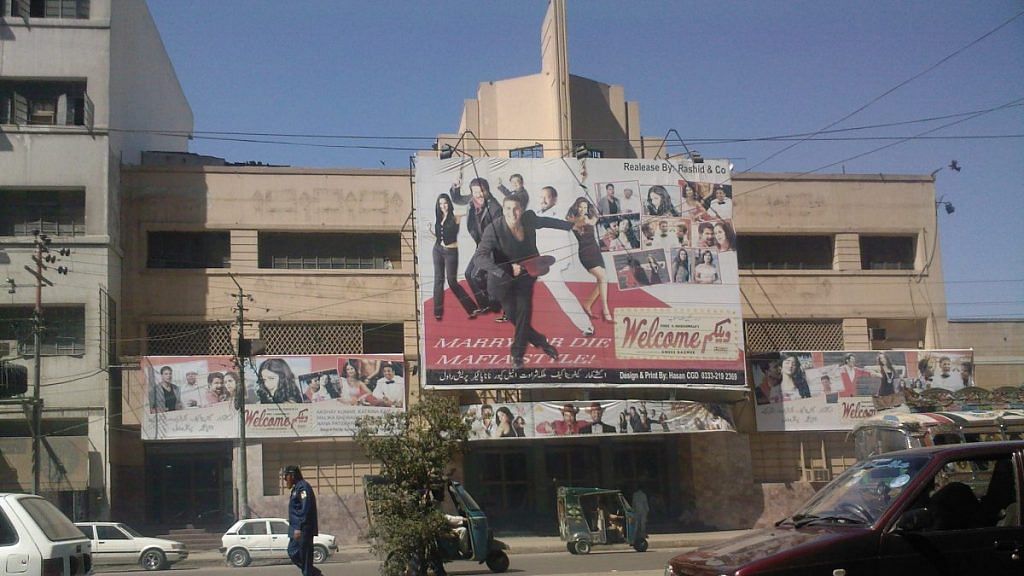Two things have been constant in our lifetime in Pakistan – azadi of Kashmir and the crisis-revival-crisis of local cinema. On Kashmir, we are knocking on all doors internationally. And it is no secret that Pakistan’s cinema industry is fuelled by Indian films and when these are banned, the business suffers.
Pakistani Science and Technology Minister Fawad Chaudhry is asking Netflix and Amazon to invest in and produce Pakistani films and dramas; it will be a good time for him to first help the local industry that is suffering.
Given the turbulent political relationship between India and Pakistan, movies are often the first casualty. Last February, after the Pulwama terror attack that led to the Balakot airstrike, the Pakistani government banned Indian films. There was little thought into how Pakistani cinema owners, who depend on Bollywood films for their livelihood, will be affected. But patriotism is bigger than smaller interests like profits and livelihoods.
Also read: In Udta Pakistan, tomatoes selling at Rs 320/kg for everyone but Imran’s finance adviser
Little takers for local content
In 150 cinemas across Pakistan, only 22 Urdu films were released in 2019, generating Rs 1.5 billion. This number fell short for cinema owners of multiplexes in big cities. Even films like Mahira Khan’s Superstar, Meera’s Baaji and Mikaal Zulfikar’s Sherdil – all of which got rave reviews and did well at the box office – didn’t stay in cinema houses for long. Cinema owners often put tickets on 50 per cent discount every time there’s a new release to fill the halls. But even that doesn’t help because the cost of showing films in modern multiplexes has gone up and there’s a loss no matter what.
The dearth of good quality local content doesn’t make the situation any better either. And the audience that can watch pirated versions of Indian films on DVDs or online continues to reject Pakistani content. Even jingoistic films like Kaaf Kangana, which was funded by Pakistan Army’s Inter-Services Public Relations, was rejected by the cinemagoers.
Banning Bollywood doesn’t amount to taking out the competition and letting local producers thrive. But that hasn’t been the case. With no Indian films to fill the spots, the audiences for Hollywood or other English films are scarce, which has resulted in reduced number of shows at multiplexes on weekends and ticket prices soaring. Film distributors say that, eventually, the Imran Khan government will have to lift the ban from Indian films or help the cinema industry with subsidies and taxes. But given the inflation in Pakistan, the government won’t be of much help other than coming up with measures like banning Indian content that only hurt the cinema owners.
Also read: Why Kartarpur corridor won’t go the same way as Vajpayee’s Delhi-Lahore bus diplomacy
Stock response
In the absence of Bollywood content, we wonder which dramas minister Fawad Chaudhry had been watching on Netflix that inspired him into thinking the streaming services could produce make original content for Pakistan. The dearth of production in the country can’t even fill the cinema houses around the year.
But this ban on Bollywood films is not new. In 1965, after the second war between the two countries, Indian films were banned by military ruler General Ayub Khan. It took another military dictator, Gen Pervez Musharraf, to remove the ban on Indian films in 2007 – more than 40 years later. In those four decades, Pakistan’s cinema industry collapsed. Going to the movies was no more a family experience; the substandard and vulgar Punjabi films had little takers.
With the reopening of Indian films in 2007, several cinemas in Lahore that were shut for years sprung to life as multiplexes and business thrived. Nearly a decade later, bans were back in the scene, with one from the Indian side, in 2016. After the Uri surgical strike, the Indian Motion Picture Producers’ Association banned Pakistani artistes from working in Indian films in what they thought was a befitting reply. In response, a group of Pakistani cinema owners decided to indefinitely stop screening all Indian films to show solidarity with the Pakistan Army. Three months later, the ban was lifted.
Also read: India asks Pakistan to return its coaches used in Samjhauta Express
No signs of ‘samjhauta’
But in August 2019, following India’s Article 370 move in Jammu and Kashmir, Indian films once again found themselves under the hammer. There are no signs of the Imran Khan government giving a second thought to the new ban. The decision is hurting business but it is good for our national character, so we are told.
Between banning movies and artistes from the other country, there is now a new element added to the exchange – the question of rakes. Now, India wants Pakistan to return the Samjhauta Express rake, which is lying for the past five months at Wagah.
Until there is no samjhuta (compromise) on the ban, Pakistanis will be stuck with films like Dhai Chaal that will show us our favourite ‘R&AW agent’ Kulbhushan Jadhav running around in Balochistan, sabotaging the multi-billion-dollar China-Pakistan Economic Corridor project. What? No spoilers; for that you have to wait for the release, or not.
The author is a freelance journalist from Pakistan. Her Twitter handle is @nailainayat. Views are personal.
